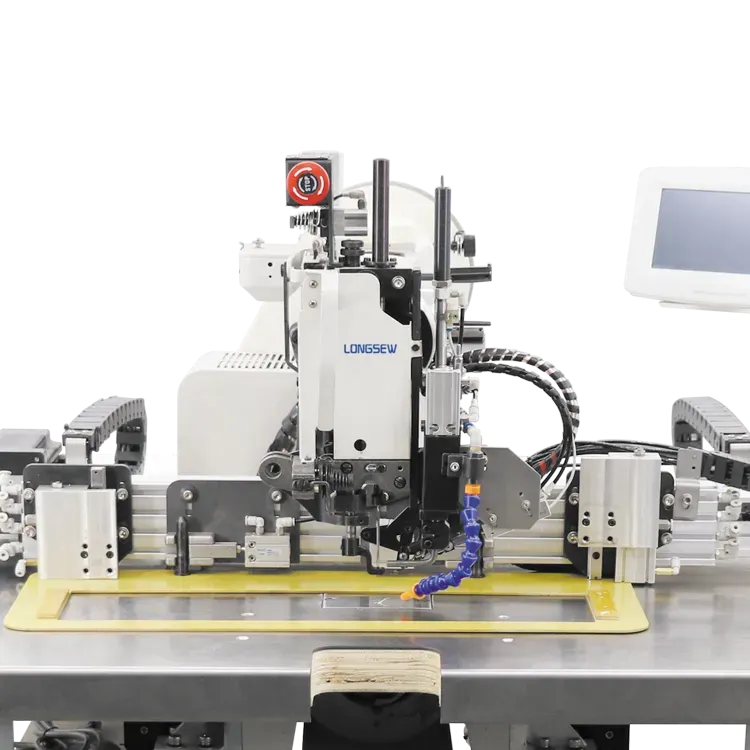Heavy Duty Sewing Machines
What Makes a Sewing Machine Heavy Duty?
In the world of sewing, whether for fashion design, home crafts, or industrial purposes, the choice of a sewing machine can significantly influence the quality of work produced. Among the various types of sewing machines available, heavy-duty models stand out for their robust construction and enhanced capabilities. But what exactly makes a sewing machine heavy duty?
First and foremost, the term heavy duty typically refers to the machine's ability to sew through thick and heavy fabrics, such as denim, canvas, and upholstery material. This capability is primarily due to a stronger motor and a sturdy build. Heavy-duty sewing machines are equipped with powerful motors that generate higher torque, allowing them to cut through multiple layers of material without straining. While standard machines may struggle with such tasks, heavy-duty models make these challenging projects seem effortless.
The construction materials used in heavy-duty sewing machines contribute significantly to their performance. These machines often feature a metal frame as opposed to plastic components. A metal frame increases stability, reduces vibrations during operation, and enhances durability. In contrast, plastic machines may be adequate for lighter tasks, but they often struggle under pressure. Additionally, heavy-duty machines tend to have a straight stitch plate and more robust feed dogs, which help maintain the fabric's alignment, reducing the likelihood of slippage and ensuring a smooth sewing experience.
what makes a sewing machine heavy duty

Another aspect that defines a heavy-duty sewing machine is its needle system. Heavy-duty machines use larger, thicker needles designed to handle heavier threads and fabric types. This adaptation minimizes breakage and wear on both the needle and the sewing machine itself. Additionally, some models feature an adjustable presser foot pressure, which allows users to adapt the machine to different fabric thicknesses, enhancing versatility and performance.
The stitch options available on heavy-duty machines also set them apart. While standard sewing machines may have basic stitch patterns, heavy-duty machines often come with a wider variety of stitches, including zigzag, decorative, and buttonhole stitches. This range allows for creative expression and is particularly beneficial for those who work on diverse projects. The ability to adjust stitch width and length further enhances the adaptability of these machines, making them suitable for both intricate and straightforward tasks.
Maintenance is another crucial consideration when it comes to heavy-duty sewing machines. Due to their robust build quality, these machines often require less frequent servicing than their lighter counterparts. Nevertheless, it’s essential to follow proper cleaning and lubrication routines to ensure longevity and prevent wear and tear.
In conclusion, the defining features of heavy-duty sewing machines—such as their powerful motors, sturdy metal frames, specialized needle systems, and varied stitch options—make them ideal for handling tough materials and challenging projects. For avid sewers and professionals alike, investing in a heavy-duty machine can open up a world of possibilities, enabling them to create more complex and durable designs. Whether you are a beginner or an experienced seamstress, understanding these characteristics will help you make an informed decision when selecting the right machine for your sewing needs.
-
Industrial Cylinder Arm Sewing Machine: Revolutionizing Heavy-Duty SewingNewsJul.28,2025
-
Cylinder Arm Sewing Machine: Perfect for Special Sewing ApplicationsNewsJul.28,2025
-
Cylinder Bed Sewing Machine: Essential for Sewing Complex MaterialsNewsJul.28,2025
-
Heavy Duty Sewing Machine: The Essential Tool for Industrial ApplicationsNewsJul.28,2025
-
Computerized Pattern Sewing Machine: Revolutionizing Precision StitchingNewsJul.28,2025
-
Heavy Duty Industrial Sewing Machine: Power Meets PrecisionNewsJul.28,2025
-
Leather Sewing Machine: The Industrial Standard for Tough MaterialsNewsJul.18,2025





























